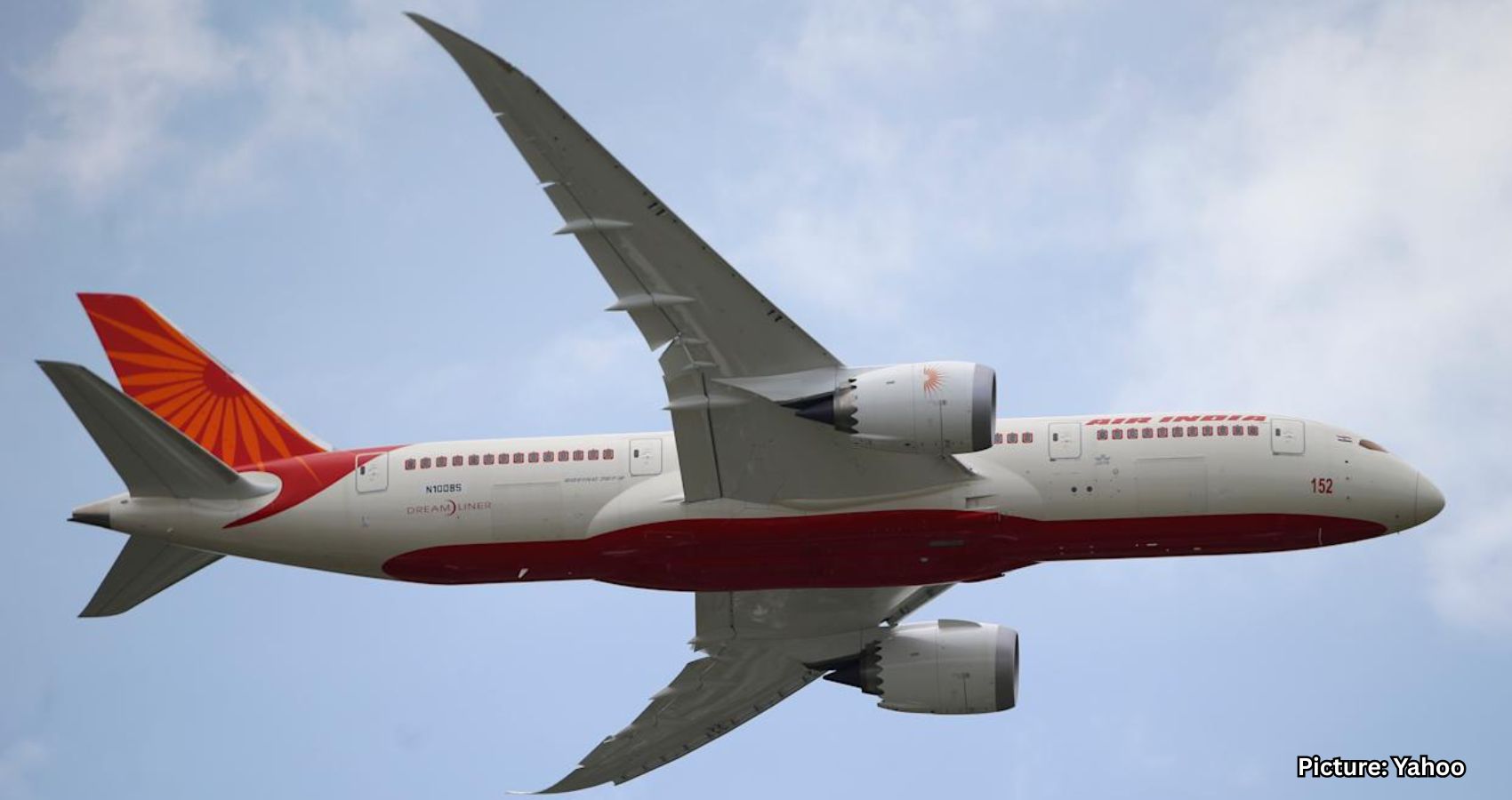Passengers aboard an Air India flight from Delhi to Hong Kong were left rattled on June 1 when they encountered a mid-air scare involving a malfunctioning door. About an hour after the Boeing 787 had taken off from Indira Gandhi International Airport, a door on the aircraft reportedly began to shake and emit alarming noises, including hissing and growling sounds. The incident was unsettling for many on board, though it ultimately posed no threat to flight safety. The crew took quick action by stuffing paper napkins into a narrow gap at the top of the door and pushing on it in an effort to reduce the noise and movement. The flight, despite the disturbance, continued without any formal interruption and landed safely in Hong Kong, according to a report from the Times of India.
This is not the first time that Boeing’s Dreamliner series has faced similar issues. There have been at least three earlier instances of doors making unusual noises mid-air. The first was reported in 2019 on a Japan Airlines flight. Later, two more cases emerged in 2022, one involving German airline TUI and the other American Airlines. In contrast to the Air India flight, all three of those earlier flights were diverted back to their origin airports due to safety concerns.
The current spotlight on Boeing 787 aircraft has intensified following a major crash that occurred on June 12 in Ahmedabad. That tragic accident claimed the lives of 275 individuals. It’s important to note, however, that the door-related issue on the Delhi-Hong Kong flight happened prior to that fatal crash.
Although events like these can be deeply unsettling for passengers, aviation experts and pilots have assured the public that such issues are not indicative of catastrophic danger. They have emphasized that doors on commercial aircraft are designed to stay sealed and cannot be opened mid-flight due to differences in cabin and external air pressure. According to several pilots, a hissing noise or minor shaking does not equate to a structural failure or compromise in overall safety.
The specific flight in question was Air India’s AI-314, which departed from Delhi at 11:45 pm—over an hour later than its scheduled departure time. One passenger recounted the unsettling moment in a social media post, saying, “About an hour after take-off, the door started shaking and making noises. It seemed the door seal came off due to air pressure.”
In the wake of the June 12 crash, scrutiny has intensified around Air India’s maintenance practices for its fleet of Boeing aircraft. Speaking publicly on the matter, Air India CEO and Managing Director Campbell Wilson emphasized the airline’s commitment to stringent maintenance and safety protocols. Referring to the aircraft that crashed in Ahmedabad, Wilson said the Boeing 787-8 Dreamliner involved in that accident was “well-maintained” and had undergone its last significant inspection in June 2023, with the next scheduled check set for December 2025.
Offering further details on the aircraft’s technical condition, Wilson stated, “The plane was well-maintained, with its last major check in June 2023 and the next scheduled for December 2025. Its right engine was overhauled in March 2025, and the left engine was inspected in April 2025. Both the aircraft and engines were regularly monitored, showing no issues before the flight.”
To address public concerns, Wilson also clarified recent decisions made by the airline regarding its widebody operations. A 15 per cent reduction in widebody fleet activity has been implemented, but Wilson assured that this is a short-term step and not indicative of long-term issues.
Following the Ahmedabad tragedy and in line with directives from the Directorate General of Civil Aviation (DGCA), Air India has launched comprehensive safety reviews of its Boeing 787 fleet. Out of the airline’s total of 33 Boeing 787 aircraft, thorough inspections have already been completed on 26 planes. Wilson noted that these aircraft have all been cleared for continued operation. The remaining seven planes are currently undergoing routine maintenance and will be subjected to the same detailed safety assessments before being allowed back into service.
“Following the review, the DGCA has confirmed that Air India Boeing 787 fleet and maintenance processes fully meet safety standards,” Wilson said.
While the DGCA has acknowledged certain maintenance-related concerns in its surveillance of Air India operations, it found no major safety issues specifically linked to the airline’s 787 fleet. The agency did, however, call on the airline to improve inter-departmental coordination and internal procedures to ensure that operational safety remains uncompromised.
On June 13, just one day after the Ahmedabad crash, the DGCA issued an order mandating heightened monitoring of Air India’s Boeing 787 aircraft. The fleet in question includes 26 Boeing 787-8 models and seven Boeing 787-9 aircraft. This decision reflects a broader push to guarantee that every aircraft meets the highest safety benchmarks, especially after such a devastating accident.
Despite the troubling mid-air episode on June 1, Air India’s swift response and continued emphasis on regulatory compliance appear to have helped reassure both passengers and authorities. The airline is now working closely with aviation regulators to ensure that any emerging issues are identified and addressed promptly.
In summary, while the door-related disturbance on flight AI-314 did not lead to any injuries or deviations from the flight plan, it serves as a reminder of the challenges airlines face in maintaining passenger confidence amid heightened scrutiny. The incident, together with the ongoing investigations and safety checks, underlines the aviation industry’s need for constant vigilance and transparency.
By taking proactive steps, such as thorough fleet inspections and public communication, Air India appears determined to maintain its operational integrity and customer trust in a period marked by public anxiety and regulatory oversight.

